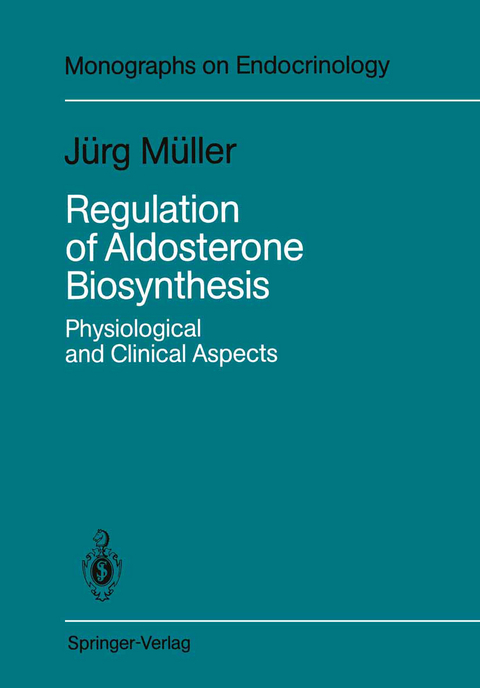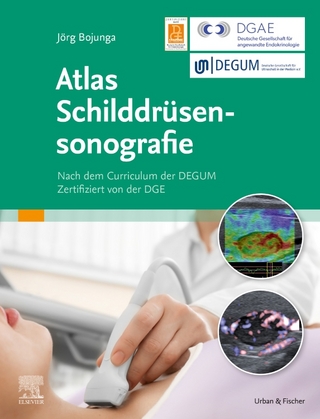
Regulation of Aldosterone Biosynthesis
Springer Berlin (Verlag)
978-3-642-83122-5 (ISBN)
Jürg Müller, Dr. sc. tech. ETH, seit 2005 Geschäftsführer der MKR Partner, Solothurn. Frühere Tätigkeiten: 1972 1978 Abteilungsleiter Systemanalyse bei der BBC Schweiz, 1978 1990 Direktor der Cement- und Kalkfabrik Wildegg und des Kraftwerks Rüchlig in Aarau, 1991 2004 Generaldirektor der Papierfabrik Biberist.
1 Zona Glomerulosa of the Adrenal Cortex: Source of Aldosterone.- 2 Pathway of Aldosterone Biosynthesis.- 2.1 Classical Pathway and Alternative Pathways.- 2.2 Corticosterone as an Intermediate Product.- 2.3 18-Hydroxycorticosterone: Intermediate Product or By-product?.- 2.4 Alternative Pathway Through 18-Hydroxy-11-deoxycorticosterone?.- 2.5 Deoxycorticosterone Secretion.- 3 Aldosterone Biosynthesis by Cell-Free Systems.- 4 Substances Directly Influencing Aldosterone Biosynthesis in Shortterm Incubation or Perfusion Experiments.- 4.1 Angiotensins.- 4.2 Monovalent Cations.- 4.3 Divalent Cations.- 4.4 ACTH, ACTH-related Peptides, and Other Pituitary Hormones.- 4.5 Amines.- 4.6 Prostaglandins and Inhibitors of Prostaglandin Biosynthesis.- 4.7 Aldosterone-Inhibiting Peptides.- 4.8 Specific Inhibitors of Steroidogenic Enzymes.- 4.9 Inhibitors of RNA or Protein Synthesis.- 4.10 Steroid Hormones.- 4.11 Ouabain.- 4.12 Miscellaneous Biological Substances with Direct Stimulatory or Inhibitory Effects on Aldosterone Biosynthesis.- 4.13 Site of Action of Stimulators or Inhibitors in the Biosynthetic Pathway.- 4.14 Primary Effects and Intracellular Mediation.- 5 Alterations in Aldosterone Biosynthesis and Secretion in Long-Term Experiments and Diseases.- 5.1Alterations in Sodium Intake or in Sodium Balance.- 5.2 Alterations in Potassium Intake or in Potassium Balance.- 5.3 Exogenous Angiotensin or Renin.- 5.4 Pharmacological Blockade of the Renin-Angiotensin System.- 5.5 Role of the Kidneys.- 5.6 Role of the Pituitary Gland.- 5.7 Dopaminergic Regulation of Aldosterone Secretion.- 5.8 Role of the Central Nervous System.- 5.9 Normal Life.- 5.10 Estrogens and Progestogens.- 5.11 Aspects of Negative Feedback Regulation.- 6 Conclusions.- 6.1 Multiplicity of Aldosterone-Stimulating Substances.- 6.2 "Adrenoglomerulotropins".- 6.3 Physiological Inhibitors of Aldosterone Biosynthesis.- 6.4 The Shrinking Black Box.- 6.5 Long-Term Regulation of Late Steps in Aldosterone Biosynthesis.- 6.6 A Matter of Time.- 6.7 Enzymology of the Final Steps in Aldosterone Biosynthesis.- 6.8 Predominance of the Renin-Angiotensin System in the Physiological Control of Aldosterone Secretion?.- 6.9 Multifactorial Control of Aldosterone Biosynthesis.- References.
| Erscheint lt. Verlag | 8.12.2011 |
|---|---|
| Reihe/Serie | Monographs on Endocrinology |
| Zusatzinfo | XV, 364 p. |
| Verlagsort | Berlin |
| Sprache | englisch |
| Maße | 170 x 244 mm |
| Gewicht | 660 g |
| Themenwelt | Medizinische Fachgebiete ► Innere Medizin ► Endokrinologie |
| Schlagworte | ACTH • Aldosterone • biosynthesis • endocrinology • Glucocorticoid • growth • growth hormone • Hormone • Hypophyse • Metabolism • Peptides • Prolactin • Protein • Regulation • Steroid • thyroid hormone |
| ISBN-10 | 3-642-83122-2 / 3642831222 |
| ISBN-13 | 978-3-642-83122-5 / 9783642831225 |
| Zustand | Neuware |
| Haben Sie eine Frage zum Produkt? |
aus dem Bereich


